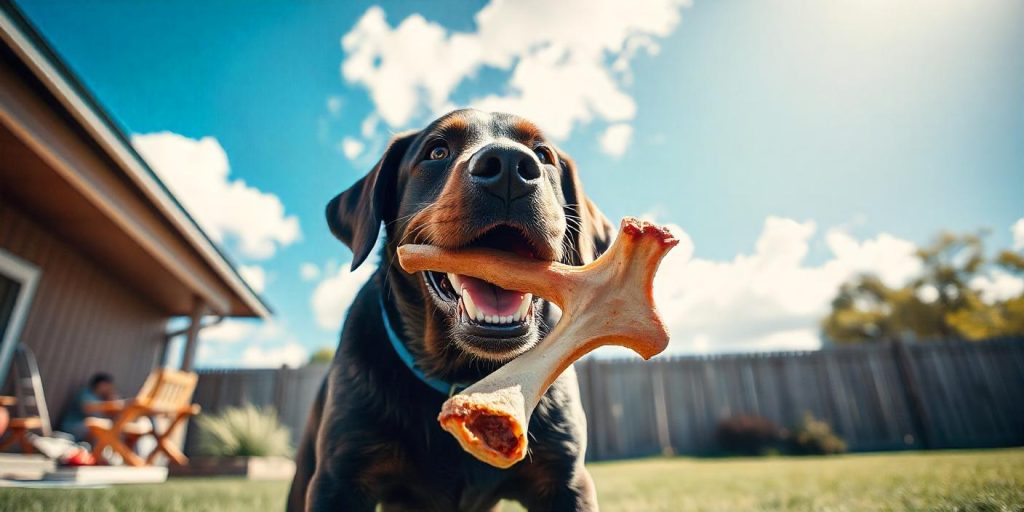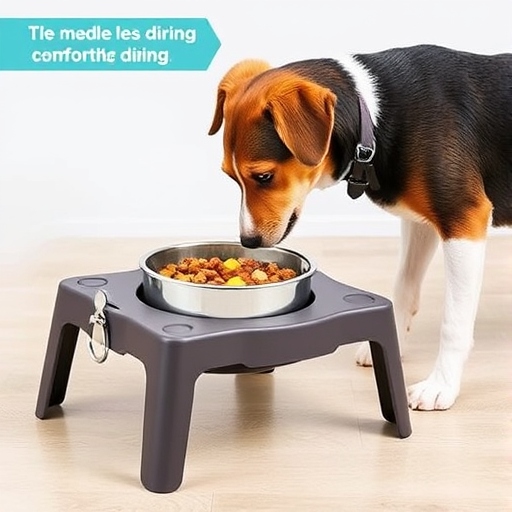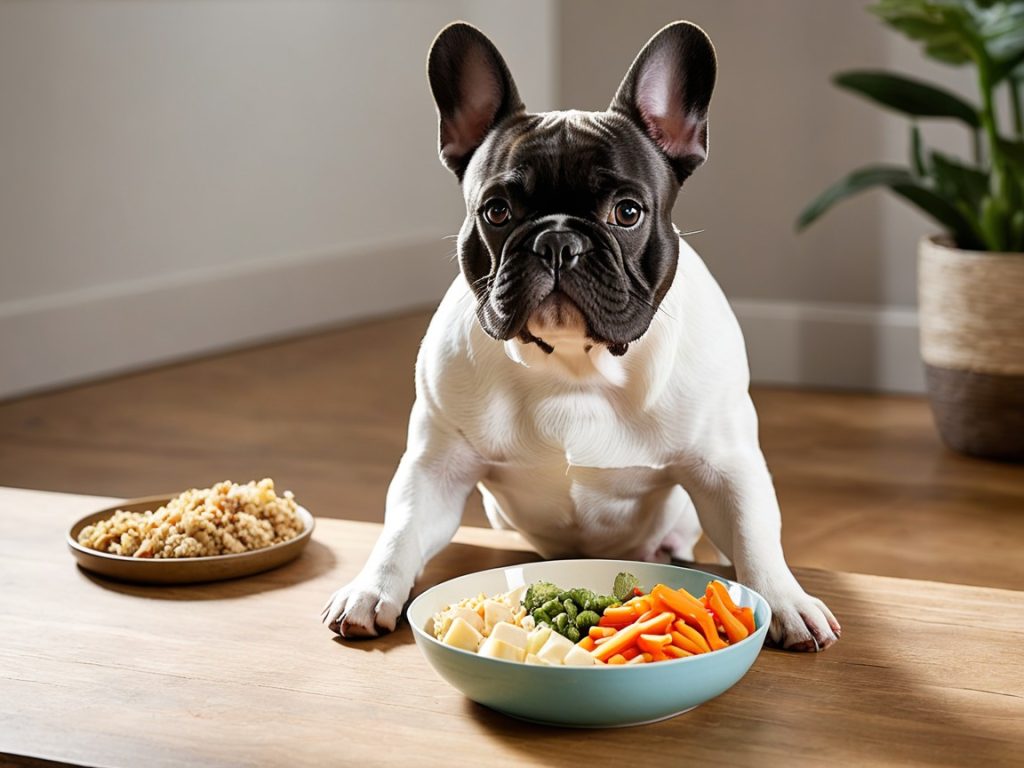Table of Contents
ToggleIntroduction
Dogs are beloved members of our families, and as such, we often want to share our food with them. Ham bones, in particular, may seem like a delicious and natural treat for your furry friend. However, not everything safe for humans is equally safe for dogs. In this article, we will explore can dogs eat ham bones, the risks involved, and safer alternatives to keep your pet healthy and happy. For more tips on dog nutrition, visit ValueDogFood.com or check out their guide on the best dog food for French Bulldogs.
Can Dogs Eat Ham Bones?
Can Dogs Eat Ham Bones? The short answer is no, ham bones are not safe for dogs. While dogs have an innate love for chewing on bones, not all bones are created equal. Ham bones, especially cooked ones, pose significant risks to your dog’s health.
Choking Hazards:
Ham bones can easily splinter into sharp fragments when chewed. These splinters can become lodged in your dog’s throat, causing choking or other airway blockages. Even larger pieces can get stuck, leading to a terrifying emergency.
Digestive Issues
If swallowed, bone fragments can travel through your dog’s digestive system and cause severe complications. Sharp pieces may puncture or tear the lining of the stomach or intestines, leading to internal bleeding and infections.
Bacterial Contamination
Raw ham bones may carry harmful bacteria like Salmonella or E. coli. Dogs that consume contaminated bones are at risk of foodborne illnesses, which can cause diarrhea, vomiting, and lethargy.
Cooked Bones Are Worse
Cooked ham bones are particularly dangerous. Cooking makes bones brittle and more likely to splinter. This increases the risk of internal injuries and other health problems.
Potential Health Risks of Feeding Ham Bones to Dogs

Can Dogs Eat Ham Bones? Feeding ham bones to your dog can lead to several health issues, some of which can be life-threatening. Here are the most common risks:
1. Dental Damage
Ham bones are hard and can crack or break your dog’s teeth. Dental injuries can be painful and may require expensive veterinary treatment, such as tooth extractions or root canals.
2. Pancreatitis
Ham is high in fat, which can trigger pancreatitis in dogs. This condition involves inflammation of the pancreas and can cause severe abdominal pain, vomiting, and loss of appetite. Dogs with pancreatitis may require hospitalization and long-term dietary changes.
3. Internal Injuries
As mentioned earlier, bone splinters can cause punctures or tears in the digestive tract. These injuries may not be immediately apparent but can lead to severe complications if untreated.
4. Blockages
Large chunks of bone can create blockages in the stomach or intestines. These blockages can prevent food and water from passing through, causing your dog to become dehydrated and malnourished. Surgery is often required to remove these obstructions.
Benefits of Bones for Dogs

While ham bones are unsafe, it’s important to recognize that chewing is a natural and beneficial activity for dogs. Chewing helps:
Maintain Dental Health: Chewing can reduce plaque buildup and promote healthier gums.
Provide Mental Stimulation: Chewing is an enjoyable and mentally engaging activity for dogs.
Relieve Stress and Anxiety: The act of chewing can have a calming effect on dogs.
To ensure your dog gets these benefits without the risks, it’s crucial to choose safe alternatives to ham bones.
What to Do If Your Dog Eats a Ham Bone
Accidents happen, and if your dog gets hold of a ham bone, it’s essential to act quickly and responsibly. Here’s what you should do:
1. Monitor Your Dog Closely
Watch for signs of distress, including:
Choking or coughing.
Vomiting or diarrhea.
Lethargy or unusual behavior.
Blood in stool or vomit.
2. Do Not Induce Vomiting
Unless instructed by a veterinarian, do not attempt to make your dog vomit. Bone fragments could cause further damage on the way back up.
3. Contact Your Veterinarian
Call your vet immediately if you suspect your dog has swallowed a bone or is showing symptoms of a problem. Be prepared to provide details about the size of the bone and any symptoms your dog is experiencing.
4. Prepare for an Emergency Visit
In severe cases, your dog may need an X-ray or surgery to remove bone fragments or repair internal injuries. Quick action can save your dog’s life.
Safe Alternatives to Ham Bones
Instead of giving your dog ham bones, consider these safe and healthy alternatives:
1. Commercial Dog Chews
Many pet stores sell chew toys and treats specifically designed for dogs. Look for:
Dental chews to promote oral health.
Rawhide-free chews for safer digestion.
2. Raw Bones (Under Supervision)
Raw bones from reputable sources can be a safer option for dogs. Choose large, sturdy bones like beef knuckles or marrow bones. Always supervise your dog while they chew, and discard the bone if it starts to splinter.
3. Rubber or Nylon Chew Toys
Durable chew toys made from rubber or nylon can satisfy your dog’s urge to chew without the risks associated with real bones.
4. Frozen Treats
Freeze peanut butter (without xylitol) or dog-friendly yogurt in a Kong toy for a refreshing and engaging snack.
FAQs
1. Can dogs eat raw ham bones?
Raw ham bones are slightly safer than cooked ones but still carry risks such as bacterial contamination and potential choking. Always consult your veterinarian before offering raw bones and supervise your dog closely.
2. Why are cooked ham bones more dangerous?
Cooking makes bones brittle, increasing the likelihood of splintering. Splinters can cause internal injuries, choking, or digestive blockages.
5. What are the best alternatives to bones for dogs?
Commercial dog chews, durable rubber or nylon toys, and frozen treats like peanut butter in a Kong toy are excellent alternatives.
Conclusion: Can Dogs Eat Ham Bones?
Can Dogs Eat Ham Bones? While it may be tempting to give your dog a ham bone as a treat, the risks far outweigh the benefits. Choking hazards, digestive issues, and potential health complications make ham bones an unsafe choice for your furry friend. Instead, opt for safer alternatives like commercial dog chews, raw bones under supervision, or durable chew toys.
Your dog’s health and safety should always come first. If you’re ever in doubt about what treats are safe, consult your veterinarian for advice. By making informed choices, you can keep your dog happy, healthy, and safe for years to come.



